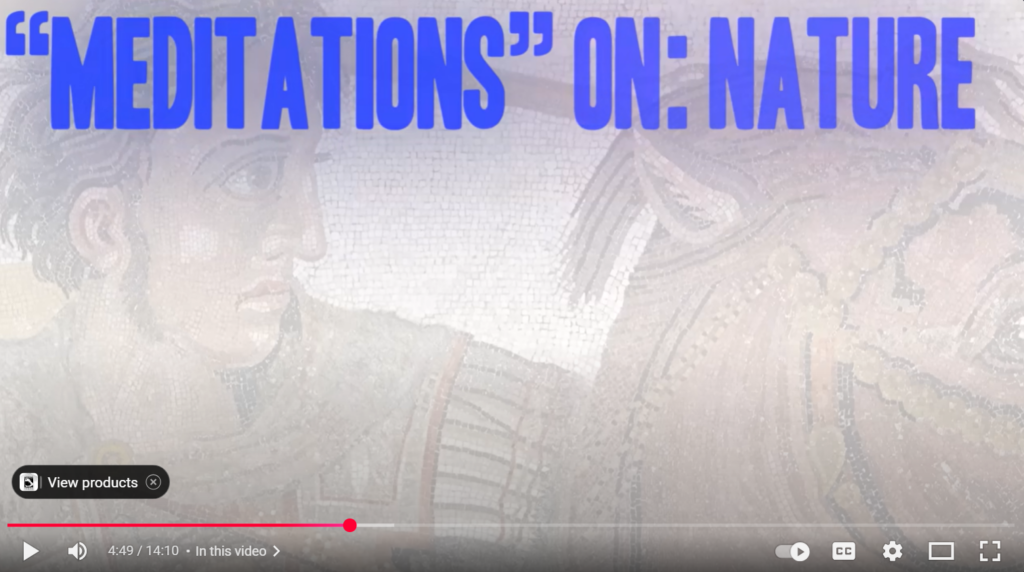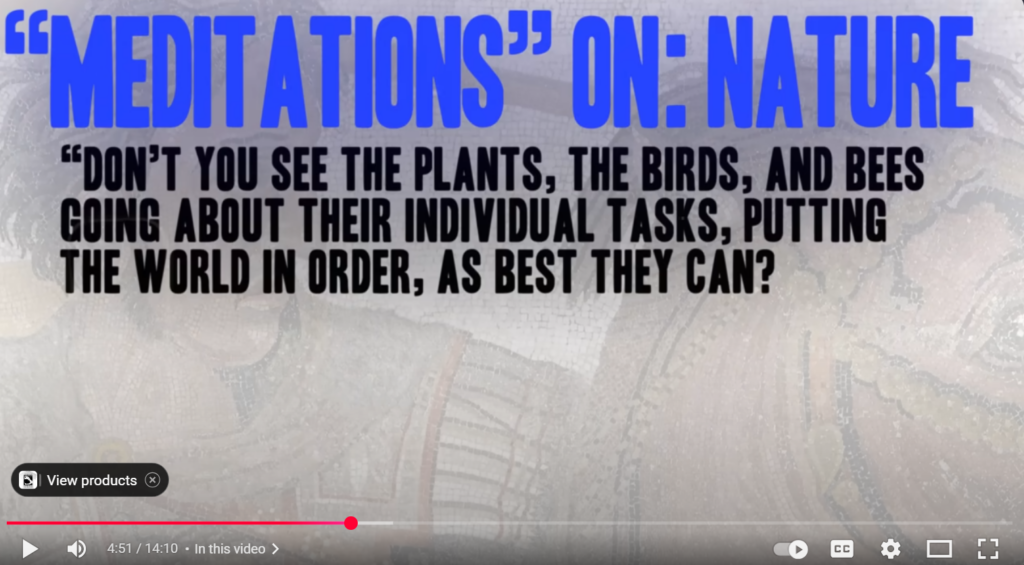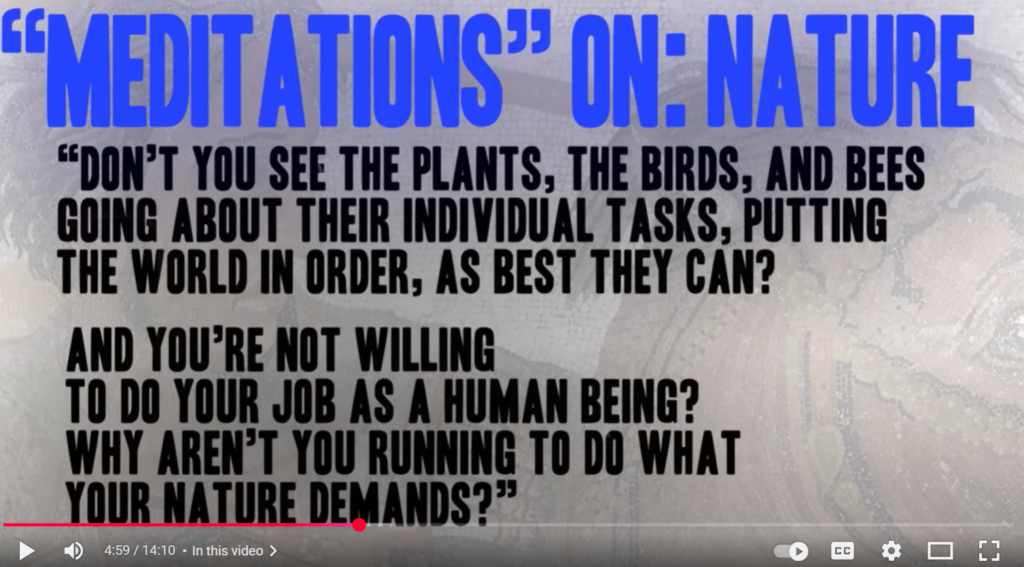Challenge B: Roman Hudson
Substantive Contribution #1
I grew up watching tons of educational videos, such as the one above. Horses, and exurb1a are two of my favourite creators who make mid-length videos (around 20 minutes) regarding a vast range of topics. This particular video is one about Marcus Aurelius. This is my favourite Stoicism video I’ve watched because it focuses on the actual history of who Marcus Aurelius was, why he lived that way, the challenges he faced, and overall paints a beautiful picture of the time and who he was.
Some of the methods we have touched on in class that Horses utilizes in this video were Dual Coding Theory and Segmenting.
Dual Coding Theory
Dual coding talks about how we have increased retention and capacity when we utilize both audio and visual cues. In this video, Horses uses this incredibly well. This example is at the end of a segment where he is talking about how one of Marcus’s ideas is that the world is full of bad or negative people in which will always be, and trying to get rid of all negative people is like asking vines to grow without thorns, don’t be ridiculous. In this section, the topic and information is being given through audio and Horses knows that the emotional sentiment of the quote is at the end of the sentence, that being ‘Don’t be ridiculous.’ Horses uses dual coding though after saying the quotes he has a picture of thorns plus an abbreviated version of the full quote, which he left off the screen after he finished speaking. Through the utilization of dual coding, Horses can leave space for the viewers to contemplate what was just said and leaving them with an image gives them something to anchor their perspective to, in turn, lowering the cognitive load as people can digest the information.

Segmenting
Segmenting is described as taking something and breaking it into chunks so it is easier to digest, and then introducing the rest of the information in steps. Horses uses this throughout the video when he is giving longer quotes, where he displays the text as he reads it, leaving a pause after each section. This lowers cognitive load as it breaks down something that might feel overwhelming and complicated into simpler chunks. Horses does this to keep engagement, as giving all the information at once might overwhelm viewers and have them click off where whereas giving the information in bite-sized chunks keeps viewers in the loop and wanting to learn more.



References
“Marcus Aurelius: The Man Who Solved the Universe.” YouTube, uploaded by Horses, Accessed 02 Oct 2025, https://youtu.be/U6VBV4QUMu0.